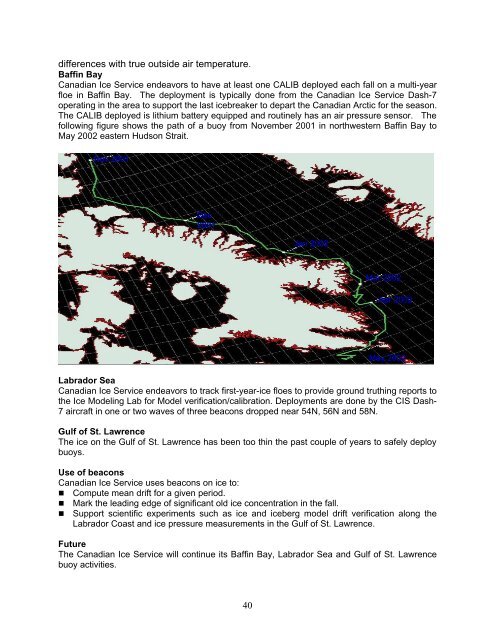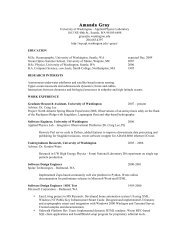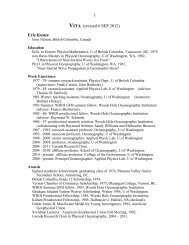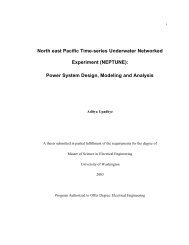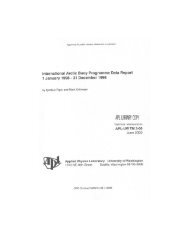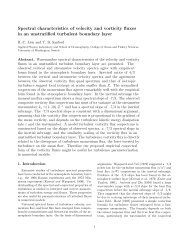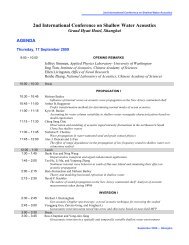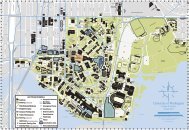International Arctic Buoy Programme (IABP) Marine Environmental ...
International Arctic Buoy Programme (IABP) Marine Environmental ...
International Arctic Buoy Programme (IABP) Marine Environmental ...
Create successful ePaper yourself
Turn your PDF publications into a flip-book with our unique Google optimized e-Paper software.
differences with true outside air temperature.Baffin BayCanadian Ice Service endeavors to have at least one CALIB deployed each fall on a multi-yearfloe in Baffin Bay. The deployment is typically done from the Canadian Ice Service Dash-7operating in the area to support the last icebreaker to depart the Canadian <strong>Arctic</strong> for the season.The CALIB deployed is lithium battery equipped and routinely has an air pressure sensor. Thefollowing figure shows the path of a buoy from November 2001 in northwestern Baffin Bay toMay 2002 eastern Hudson Strait.Nov 2001Dec2001Jan 2002Mar 2002Apr 2002May 2002Labrador SeaCanadian Ice Service endeavors to track first-year-ice floes to provide ground truthing reports tothe Ice Modeling Lab for Model verification/calibration. Deployments are done by the CIS Dash-7 aircraft in one or two waves of three beacons dropped near 54N, 56N and 58N.Gulf of St. LawrenceThe ice on the Gulf of St. Lawrence has been too thin the past couple of years to safely deploybuoys.Use of beaconsCanadian Ice Service uses beacons on ice to:• Compute mean drift for a given period.• Mark the leading edge of significant old ice concentration in the fall.• Support scientific experiments such as ice and iceberg model drift verification along theLabrador Coast and ice pressure measurements in the Gulf of St. Lawrence.FutureThe Canadian Ice Service will continue its Baffin Bay, Labrador Sea and Gulf of St. Lawrencebuoy activities.40


